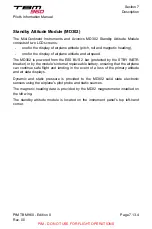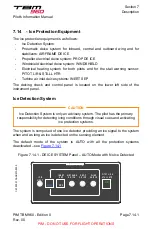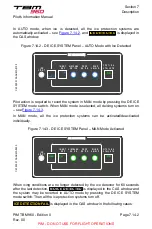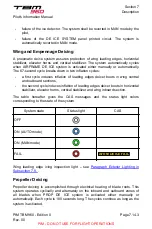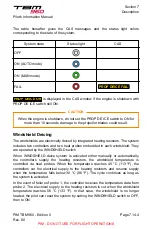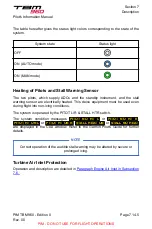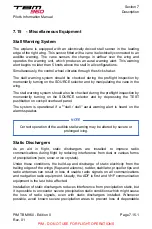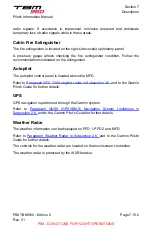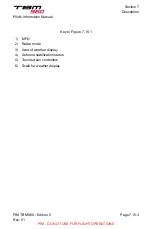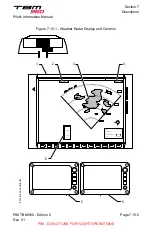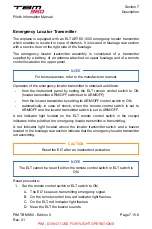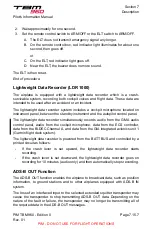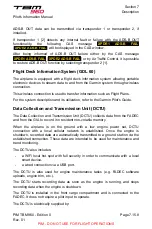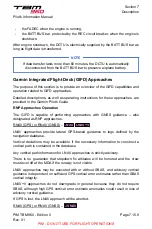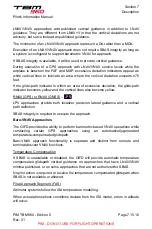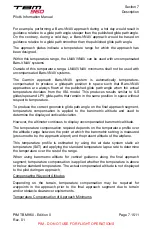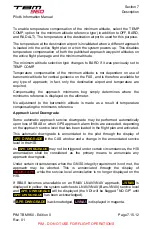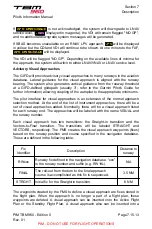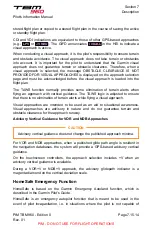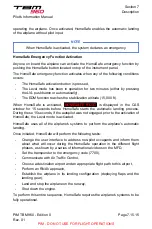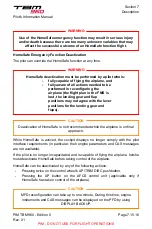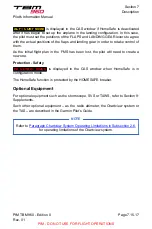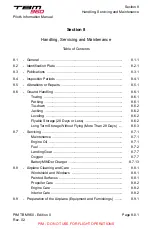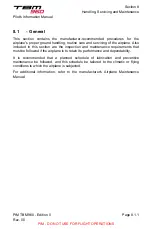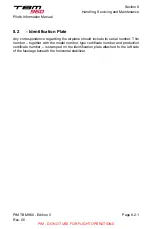
ADS-B OUT data can be transmitted via transponder 1 or transponder 2, if
installed.
If transponder 1 [2] detects any internal fault or failure with the ADS-B OUT
functionality,
the
following
CAS
message
XPDR1 ADS-B FAIL
[
XPDR2 ADS-B FAIL
] will be displayed in the CAS window.
After being informed of ADS-B OUT failure either by the CAS message
XPDR1 ADS-B FAIL
[
XPDR2 ADS-B FAIL
] or by Air Traffic Control, it is possible
to restore ADS-B OUT function by selecting transponder 2 [1].
Flight Deck Information System (GDL 60)
The airplane is equipped with a flight deck information system allowing portable
electronic devices to stream data to and from the Garmin system through wireless
connection.
This wireless connection is used to transfer information such as Flight Plans.
For the system description and its utilization, refer to the Garmin Pilot's Guide.
Data Collection and Transmission Unit (DCTU)
The Data Collection and Transmission Unit (DCTU) collects data from the FADEC
and from the GIA to record it in resident non-volatile memory.
When the airplane is on the ground with a low engine power set, DCTU
connection with a local cellular network is established. Once the engine is
shutdown, recorded data are automatically transmitted to a ground station via the
established connection. These data are intended to be used for maintenance and
trend monitoring.
The DCTU also includes:
-
a WiFi local hot spot with full security in order to communicate with a local
smart device,
-
a wired connection via a USB port.
The DCTU is also used for engine maintenance tasks (e.g. FADEC software
uploads, engine trim, etc.).
The DCTU starts recording data as soon as the engine is running, and stops
recording data when the engine is shutdown.
The DCTU is installed in the front cargo compartment and is connected to the
FADEC. It does not require a pilot input to operate.
The DCTU is electrically supplied by:
Section 7
Description
Pilot's Information Manual
PIM TBM 960 - Edition 0
Rev. 01
Page 7.15.8
PIM - DO NOT USE FOR FLIGHT OPERATIONS

